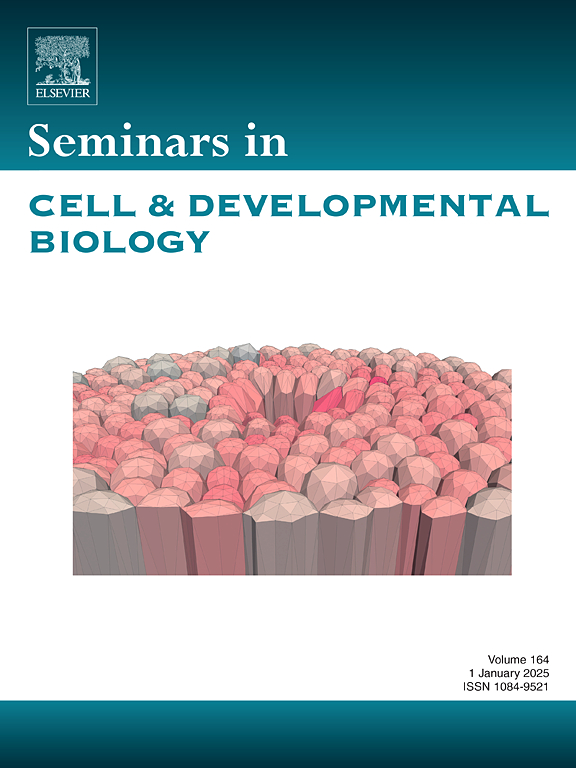Ovulation: A cellular symphony in three movements
IF 6
2区 生物学
Q1 CELL BIOLOGY
引用次数: 0
Abstract
Ovulation is a complex and tightly regulated process essential for mammalian reproduction. It involves the coordinated, tissue-scale remodelling of the ovulatory follicle, culminating in the release of a fertilisation-competent egg. Ovulation is triggered by external hormonal cues: rising levels of follicle-stimulating hormone (FSH), followed by a surge in luteinising hormone (LH) from the anterior pituitary. These cues initiate a cascade of downstream events driven by follicle-derived signals, including epidermal growth factor (EGF) and progesterone, which propagate the ovulatory response. Recent advances using ex vivo follicle culture and live imaging in mouse follicles have revealed ovulation as a stepwise, self-contained programme characterised by dynamic spatial and temporal coordination. Notably, the oocyte remains largely stationary during most of ovulation, only moving toward the rupture site minutes before its release. This finding emphasises that ovulation is not defined by egg release alone, but by a prolonged and tightly regulated sequence of cellular and tissue-level events. This review presents ovulation through a temporal framework, metaphorically structured as a symphony performed by the four major follicular cell types. Beginning with an FSH-driven prelude, the symphony progresses through three movements: LH-induced initiation and meiotic resumption; progesterone-driven late events; and finally, follicle rupture and oocyte release. Together, this framework offers a new lens to understand ovulation as a developmental performance marking the transition from reproductive readiness to potential fertilisation and new life.
排卵:三乐章的细胞交响乐
排卵是哺乳动物生殖过程中一个复杂而受严格调控的过程。它涉及排卵泡的协调,组织规模的重塑,最终释放一个受精能力的卵子。排卵是由外部激素信号触发的:促卵泡激素(FSH)水平上升,随后垂体前叶促黄体生成素(LH)激增。这些提示启动了一系列由卵泡源性信号驱动的下游事件,包括表皮生长因子(EGF)和黄体酮,它们传播排卵反应。利用离体卵泡培养和小鼠卵泡实时成像的最新进展表明,排卵是一个逐步的、独立的程序,其特征是动态的空间和时间协调。值得注意的是,在排卵的大部分时间里,卵母细胞基本保持静止,只有在释放前几分钟才向破裂部位移动。这一发现强调,排卵不仅仅是由卵子释放来定义的,而是由细胞和组织水平的一系列长期和严格调节的事件来定义的。这篇综述介绍了排卵通过一个时间框架,比喻结构作为一个交响乐由四个主要卵泡细胞类型执行。从fsh驱动的前奏开始,交响曲通过三个乐章进行:lh诱导的起始和减数分裂恢复;孕激素驱动的晚期事件;最后,卵泡破裂,卵母细胞释放。总之,这个框架提供了一个新的视角来理解排卵作为一种发育表现,标志着从生殖准备到潜在受精和新生命的过渡。
本文章由计算机程序翻译,如有差异,请以英文原文为准。
求助全文
约1分钟内获得全文
求助全文
来源期刊
CiteScore
15.10
自引率
1.40%
发文量
310
审稿时长
9.1 weeks
期刊介绍:
Seminars in Cell and Developmental Biology is a review journal dedicated to keeping scientists informed of developments in the field of molecular cell and developmental biology, on a topic by topic basis. Each issue is thematic in approach, devoted to an important topic of interest to cell and developmental biologists, focusing on the latest advances and their specific implications.
The aim of each issue is to provide a coordinated, readable, and lively review of a selected area, published rapidly to ensure currency.

 求助内容:
求助内容: 应助结果提醒方式:
应助结果提醒方式:


